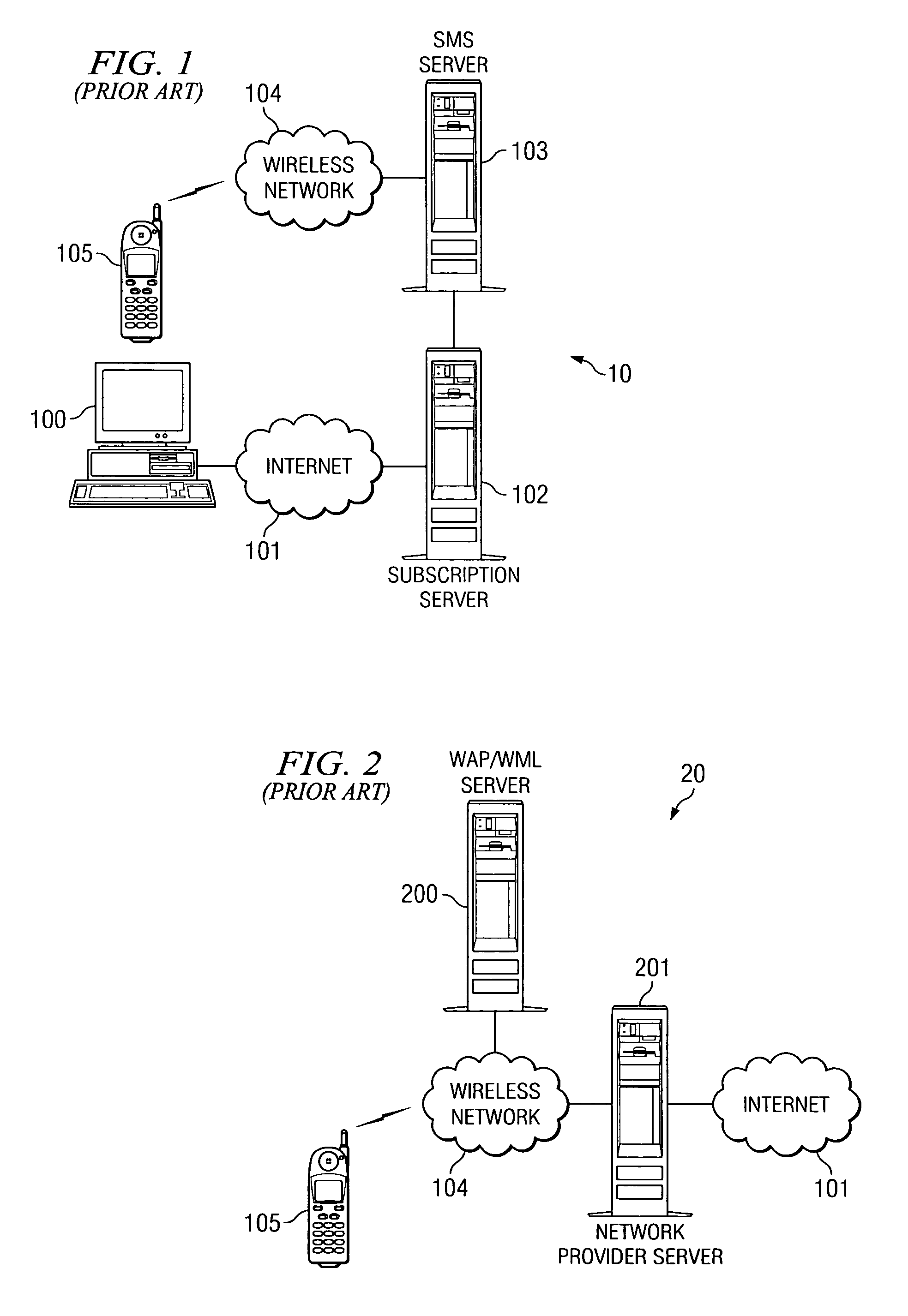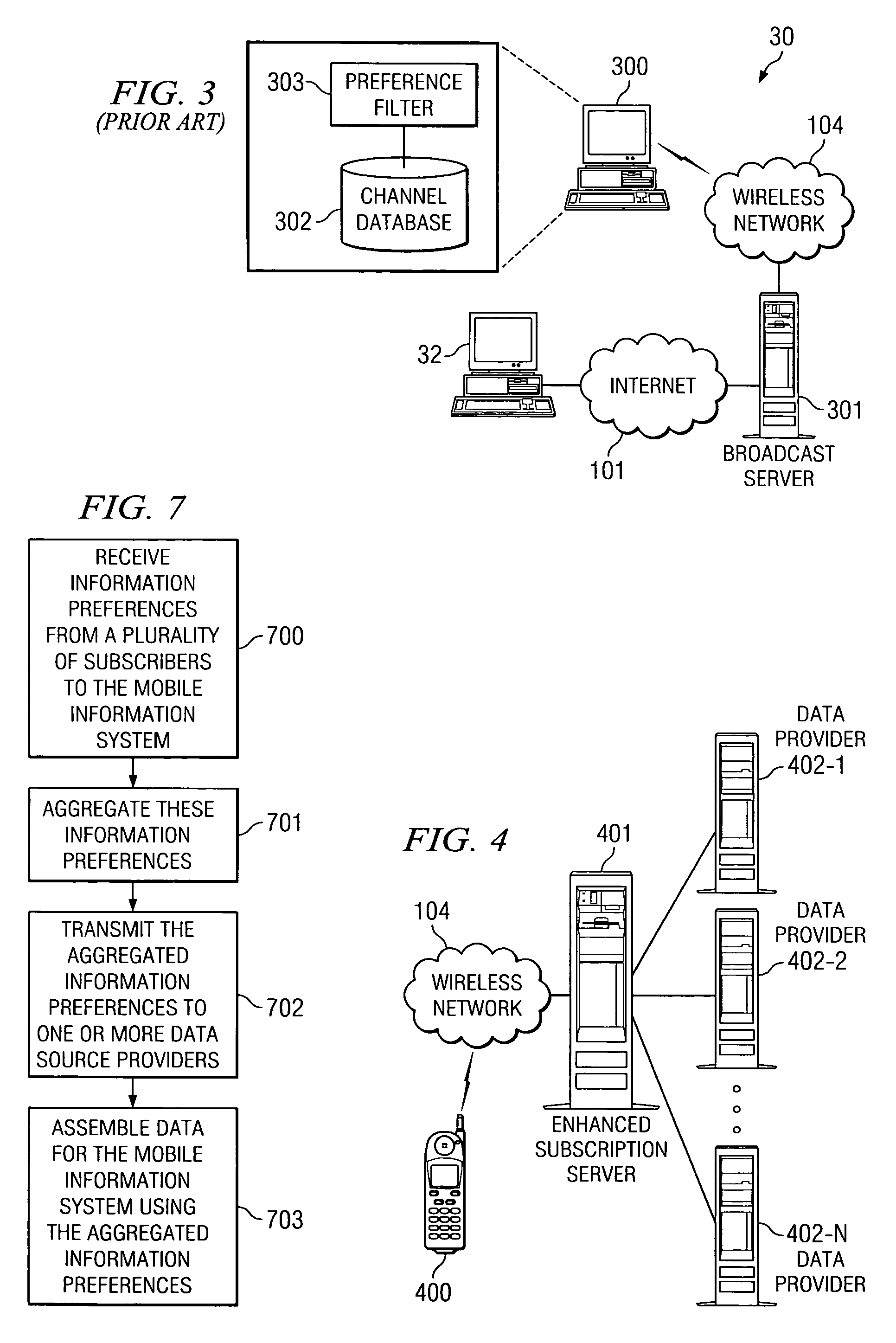System and method for developing information for a wireless information system
a wireless information system and wireless information technology, applied in the field of electronic information systems, can solve the problems of limited access methods, limited amount and format of data, and less available bandwidth capacity for data transmission than the broadband capabilities,
- Summary
- Abstract
- Description
- Claims
- Application Information
AI Technical Summary
Problems solved by technology
Method used
Image
Examples
Embodiment Construction
[0027]FIG. 1 is a block diagram illustrating typical SMS messaging system 10. A user subscribes to SMS messaging system 10 using computer 100 to connect to subscription server 102 over Internet 101. Using computer 100 the user enters subscription information and data preferences on subscription server 102. Subscription server 102 communicates that user-entered information to SMS server 103. SMS server 103 compiles the individual SMS messages that contain the information that the user requested to receive. These SMS messages are periodically transmitted to mobile device 105 over wireless network 104 for the user to view. Thus, while the user receives specifically tailored information, the user's preferences are all entered out of band through Internet 101.
[0028]FIG. 2 is a block diagram illustrating typical mobile browser system 20. When the user desires to access information on mobile device 105, the user will establish a connection to Internet 101 over wireless network 104 and netw...
PUM
 Login to View More
Login to View More Abstract
Description
Claims
Application Information
 Login to View More
Login to View More - R&D
- Intellectual Property
- Life Sciences
- Materials
- Tech Scout
- Unparalleled Data Quality
- Higher Quality Content
- 60% Fewer Hallucinations
Browse by: Latest US Patents, China's latest patents, Technical Efficacy Thesaurus, Application Domain, Technology Topic, Popular Technical Reports.
© 2025 PatSnap. All rights reserved.Legal|Privacy policy|Modern Slavery Act Transparency Statement|Sitemap|About US| Contact US: help@patsnap.com



